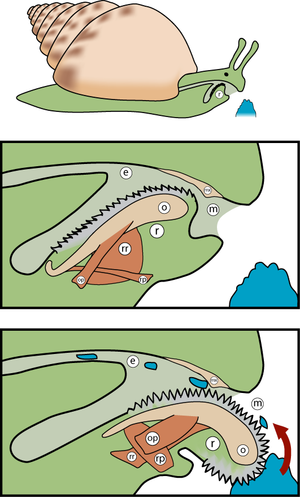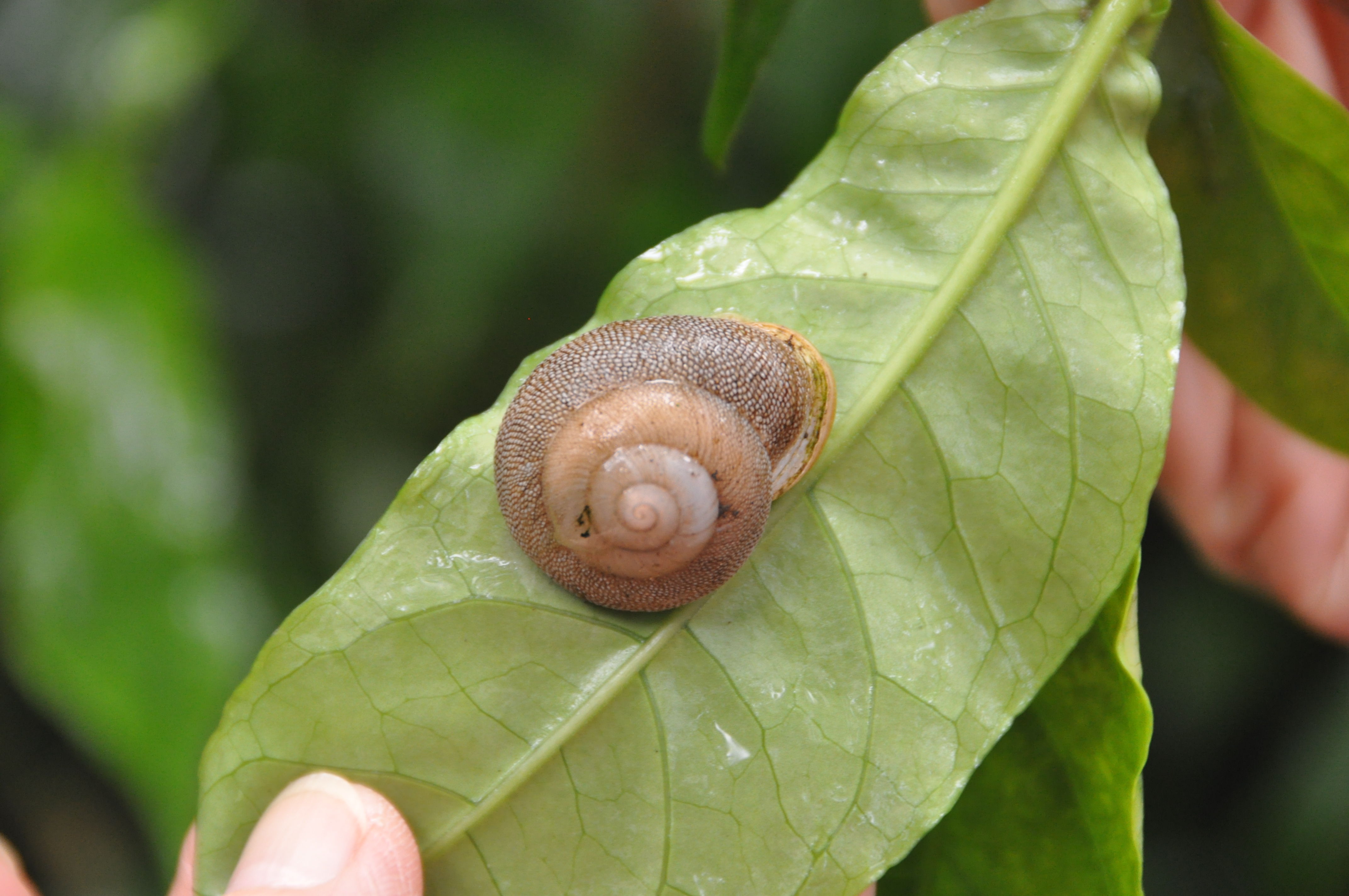Nutrition
The information regarding the specific nutrition of Inflectarius approximans is quite limited. We will need to look at gastropods, but more specifically the family of Polygyridaes, in order to understand the nutrition.
As mentioned on the
Classification page,
members of the Polygyridae family are the
terrestrial snails. Like most other members of this family,
Inflectarius approximans posses a radula in order to retrieve
its food source. A radula is an organ used by snails that has a
similar function to the tongue in humans. It uses chitinous teeth
that are located on the membrane of the radula, along with the
surrounding muscles to move it (Hickman et al. 2012). These chitinous teeth vary amongst the different members of the Polygyridae
family in size, shape and spacing (Guralnick
et al. 1999).
and spacing (Guralnick
et al. 1999).
The main purpose behind the radula is to scrape and tear apart the food the snail is ingesting, in order for it to successfully go down the digestive tract (Hickman et al. 2012). As seen in the picture on the right, the back and forth motion of the radula is what results in the food being scraped and pushed through the buccal cavity of the snail (ZipcodeZoo, 2012).
In order to come up with a more specific diet of an Inflectarius approximans we can take what we learned on the habitat page and combine it with what we know about the general diet of terrestrial snails. Terrestrial snails, like Inflectarius approximans tend to be herbivores, feeding off algae, fungi and seaweed that they scraped to pieces by their radula (Hickman et al. 2012). Based on where Inflectarius approximans resides it can be assumed that this particular species would be consuming more fungi than algae and seaweed. The survival of these herbivorous terrestrial snails is dependent on their ability to gain access to the specific plants that are a part of their diet, as well as having an abundant source available to them (Cain et al. 2011).
As seen on the Adaptation page Inflectarius approximans has an air breathing lung, making it a part of the subgroup Pulmonata. As a part of this subgroup the snail has 2 sets of tentacles, one that points upwards for sight and more specifically another that is aimed downwards for taste and smell (Hickman et al. 2012). That is a particularly useful trait to have when it comes time for finding and consuming food.
Now that we have a general sense of what and how Inflectarius approximans gets its food and what the food consists of, we can see how the circulatory system works to transfer the nutrients, like oxygen for example, to the tissues. As with the diet, there is limited information on the specifics on the circulatory system of Inflectarius approximans. To get a sense as to how the circulatory system works, we will look at the basic terrestrial gastropod circulatory system. Gastropods have an open circulatory system (Hickman et al. 2012). An open circulatory system means that the hemolymph, a substance that is similar to the blood in humans, is pumped from the heart and makes its way through a variety of vessels and open spaces called sinuses (Hickman et al. 2012). Due to the nature of this type of circulatory system, oxygen is not as easily supplied throughout the tissues and the snail moves at a much slower pace (Hickman et al. 2012).
